What The Heaviest, Smallest White Dwarf Ever Found Means For Science

The new record-holder opens up a literal Universe full of possibilities.
Someday, even our own Sun will eventually run out of hydrogen fuel in its core, bringing a tremendous set of changes to our Solar System. Its core will contract and heat up while its outer layers expand and slowly get expelled, signifying our transition into a red giant. When the helium in the core is exhausted, the core will contract further, becoming a carbon/oxygen white dwarf, while the remainder of our star gets blown back into interstellar space in a spectacular planetary nebula. For practically every star born with 40% to 800% of our Sun’s mass, the same fate awaits them all.
The white dwarf that we’re left with is always much less massive than the star it originated from, and never more massive than about 1.4 solar masses. Above this mass limit — known as the Chandrasekhar mass — a spontaneous thermonuclear reaction will occur: a type Ia supernova, destroying the white dwarf entirely. Driven by a series of curious observations, a team of scientists just discovered the most massive white dwarf ever robustly measured: between 1.327 and 1.365 solar masses, and it’s only 2,140 kilometers in radius, or barely larger than the Moon. It’s a fascinating find, but what it teaches us is truly phenomenal.
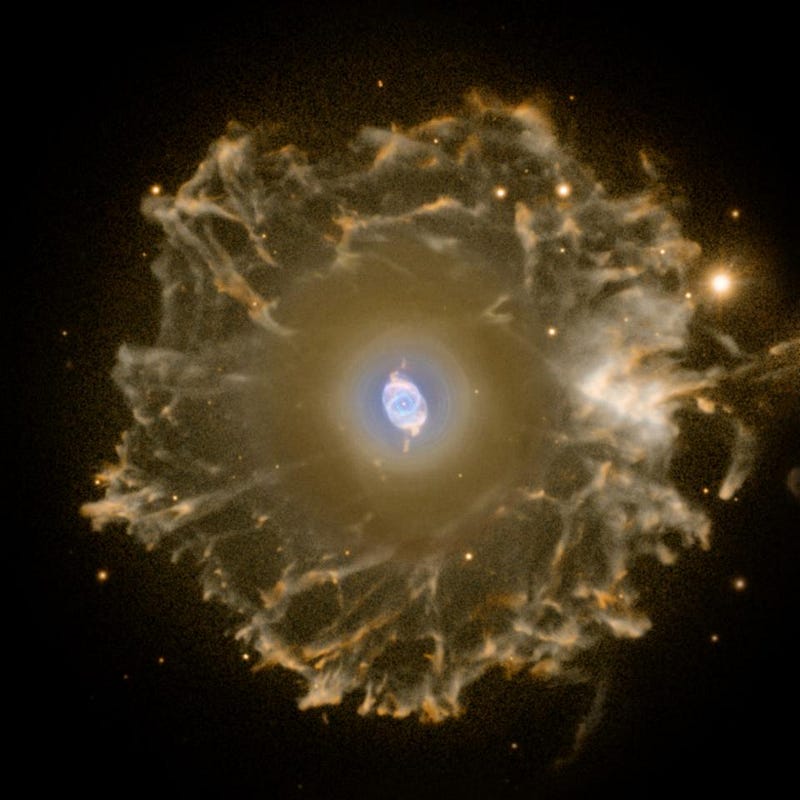
While we might look at our Solar System and our Sun as a “typical” example of what’s out there, it’s important to recognize that we’re only a sample size of 1, and that nature comes in all sorts of varieties. 95% of the stars in our galaxy are less massive than our Sun, but that remaining 5% means that approximately 20 billion stars in the Milky Way are more massive than we are. Additionally, about half of all the stars we know of are part of a system with two or more stars in them; singlet systems like our own are extremely common, but binaries, trinaries, and other multi-star configurations are quite common as well.
The reason this matters is that many binary systems are born with stars of similar masses, and hence they have similar fates. If one star in a binary system becomes a white dwarf, the other one likely won’t be far behind. The brightest star in our night sky, Sirius, has a white dwarf and a star more massive than the Sun orbiting one another; come back in about a billion years, and you’re almost certain to find two white dwarfs orbiting one another instead.
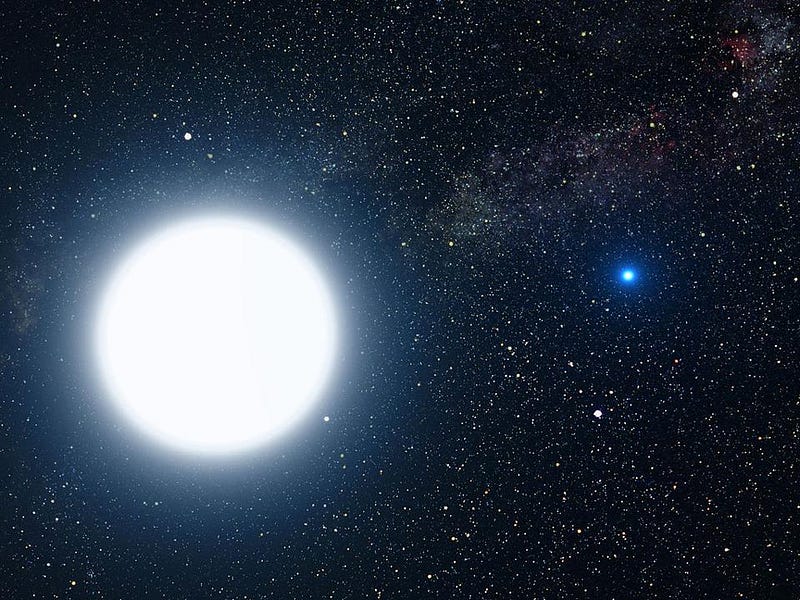
But that’s the beginning of the story, not the end. Just as binary black holes and neutron stars are known to inspiral and merge, so, too, will white dwarfs in binary systems. When they do, if their combined mass exceeds the Chandrasekhar limit, you’ll get a stellar cataclysm: a type Ia supernova, which can briefly shine as bright as some ~10 billion Suns.
But if their combined mass remains below that critical threshold instead — and keep in mind that some white dwarfs can be incredibly low in mass, with the lowest-mass one coming in at just ~17% the mass of the Sun — they’ll simply lead to the formation of another white dwarf. This new white dwarf should have some particular properties that set it apart from white dwarfs that form from single stars, so even if we only find a white dwarf post-merger, we should still be able to identify its origin. In particular, we expect:
- a rapid rotation, from the conservation of angular momentum of inspiraling and merging stellar remnants,
- a high mass, since two typical white dwarfs (of 1 solar mass or less) will combine to either lead to a supernova or a white dwarf of mass potentially comparable to the Chandrasekhar limit,
- and a strong magnetic field at its surface, just like any rapidly rotating star or stellar remnant is anticipated to have.
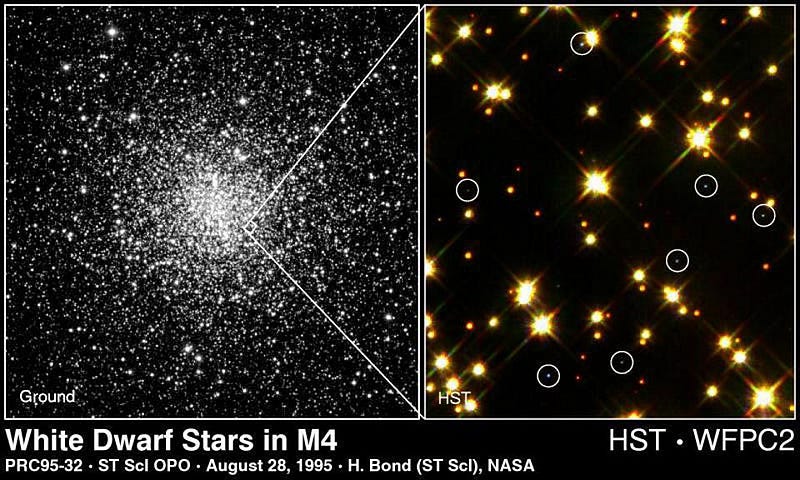
All of that, however, is purely theoretical. Theoretical studies can be incredibly useful, particularly when those theories are informed by robust observations that paint a consistent picture. But it’s when we find new objects that push the limits of what’s possible that the biggest scientific advances — the ones that take us beyond what’s already been established — can often occur. Astronomically, one of the newest frontiers occurs in what we call time-domain astronomy: signals from the Universe that vary, in some fashion, on very short timescales.
One of the best tools we have to study these short-time changes is known as ZTF: the Zwicky Transient Facility. By monitoring a portion of the sky with excellent precision over a period of time, you can become sensitive to small, periodic changes in an object’s brightness. (This is something you automatically lose if you take a time-average of your data, and one of the greatest science losses that mega-constellations of satellites threaten to inflict on the field of astronomy.)
When looking at the ZTF data, Caltech astronomer Kevin Burdge noticed something unusual. One object in the sky — a faint, relatively nearby point of light — appeared to fainten and brighten periodically by about ~3% every 7 minutes: an incredibly short timescale for such a large variation. Even though ZTF scans the sky on much longer timescales, about every 48 hours, Barnes was able to pull this rapid, short-period signal out of the cumulative data.
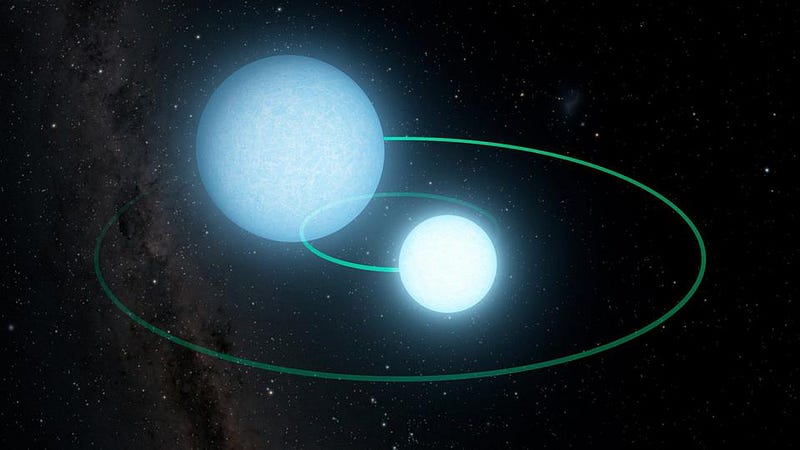
Whenever you see something that’s unlike the other things you’ve seen before, even if you’re only first seeing it because of a technological advance, your instinct ought to be to try and understand precisely what’s happening. The way we do that, astronomically, is to attempt to determine as many properties of this object as possible, and the way we achieve that is by taking as many information-rich, complementary observations as possible.
The first hint of this object’s nature came by adding in the data from the ESA’s Gaia satellite. From its perch up above Earth’s atmosphere, Gaia can accurately measure the properties of stars, including their position and brightness, over long periods of time, like months and years. As the stars move through the galaxy and the Earth orbits the Sun, this enables us to infer the three-dimensional positions and proper motions of hundreds of millions, and perhaps even billions, of stars within our own galaxy.
When we traced this light source back to its identification in the Gaia data, we found that it was only ~130 light-years (about 40 parsecs) away. From its brightness, color, and distance, we can infer that it must be a white dwarf. And with such a large, periodic variation on merely ~7 minute timescales, that tells us something else: this white dwarf must be rotating incredibly quickly.

White dwarfs, you see, are typically about the size of rocky planets, even though their masses are comparable to that of a star. If you imagined, for example, cranking up the mass of the Earth until it was about 300,000 times as dense and massive as it is today, raised its temperature to somewhere around 10,000 K, but maintained its current size, you’d have something like a white dwarf. Only, for this particular white dwarf, it rotates a full 360° about its axis not in 24 hours, but every 7 minutes: 200 times as fast as the Earth. If you were to measure the speed of this white dwarf at its equator, you’d find it’s traveling at about 95 kilometers-per-second, or 340,000 kilometers-per-hour.
Why is a white dwarf so dense, and why does it spin so fast?
One reason is that you have so much mass together in one place, but no nuclear fusion to produce radiation. Without that extreme power output to “push back” against the force of gravity, the matter inside has no other option but to contract until something can counteract the pull of gravity. The only candidate left is the integrity of matter itself, and quantum rules like the Pauli Exclusion Principle, which prevent two identical subatomic (fermionic) particles from occupying the same quantum state. That’s where the Chandrasekhar mass limit comes from; go above a certain threshold, and even this quantum rule won’t be sufficient to stop you from collapsing. Once your total mass rises above that critical value, you’ll either trigger a set of runaway fusion reactions, or — if you’re already something like a neutron star — you’ll collapse completely: into a black hole.
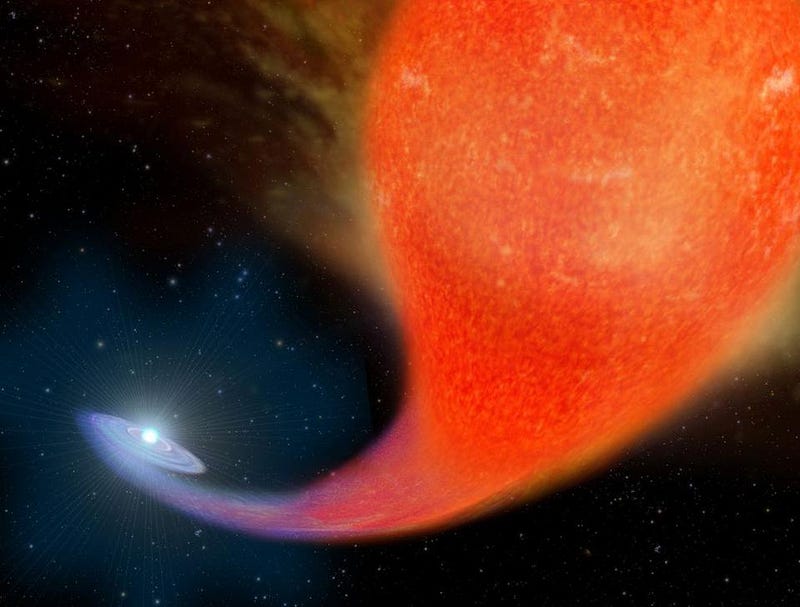
One of the interesting things that happen to white dwarfs as they gain mass and approach this limit is that their physical size actually shrinks the more and more matter you add. The space between individual particles decreases, due to the gravitational force, by a greater amount than the cumulative addition of extra particles adds to the overall volume. As a result, the more massive your white dwarf gets — the closer in mass it gets to the Chandrasekhar limit — the smaller and smaller it gets. A white dwarf that’s less than half as massive as the Sun might be up to twice as big as the Earth, but white dwarfs that approach this mass limit can be smaller than even Mars.
When you see a heavy white dwarf, one close to this mass limit, there are a couple of ways it could have formed. You could either make one from a massive star that was just slightly below the mass limit needed for a supernova, or you could make it from the merger of two smaller, lower mass white dwarfs whose combined mass still didn’t quite reach that limit. Spins this fast — completing a full rotation in ~7 minutes — aren’t expected to arise from isolated, singlet stars that evolve into white dwarfs. It should have come from a merger, as its rotation period is comparable to that of the fastest-spinning white dwarf: 5 minutes, 17 seconds.
But, if it did arise that way, there’s another clue that we should be able to go out and look for: it should also have a strong magnetic field. Neither ZTF nor Gaia could provide that information, but follow up observations with other sophisticated instruments could.
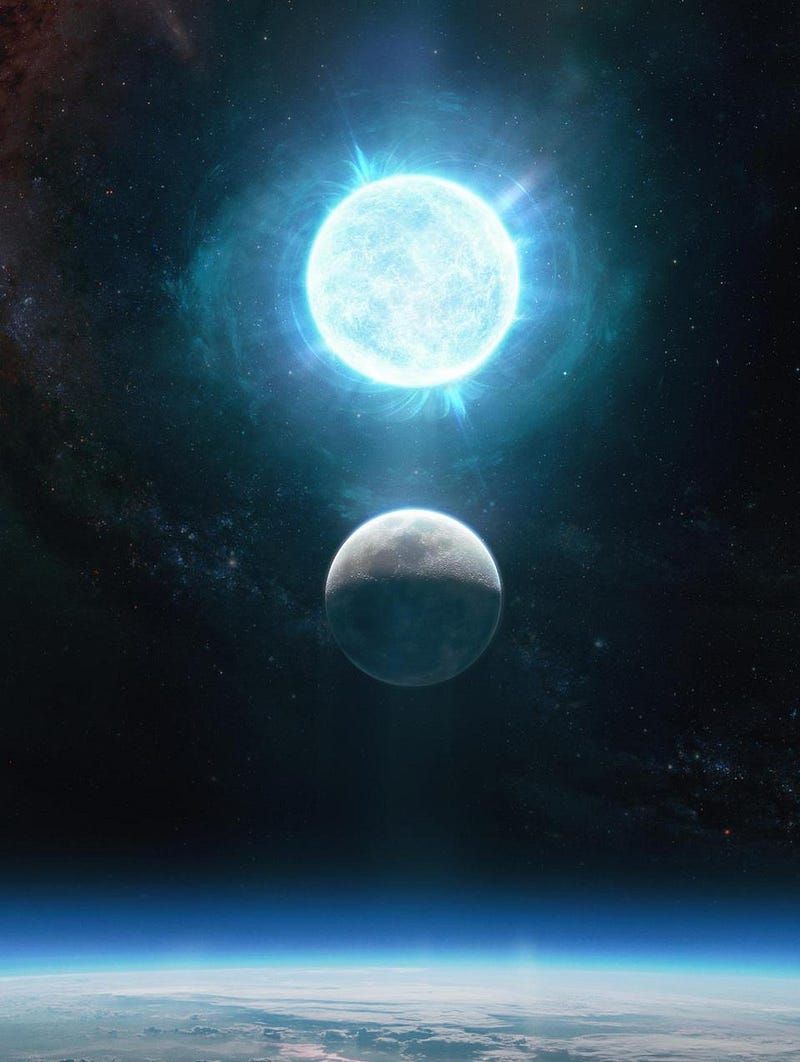
That was where Ilaria Caiazzo, Caltech astronomer and lead author of this new study, came in. She spearheaded a slew of follow-up observations, including:
- using the Keck I Telescope to perform spectroscopy on this object, breaking its light up into various individual wavelengths,
- using the Swift observatory to obtain ultraviolet photometric data,
- and using the Pan-STARRS survey data to obtain optical photometric data.
Combined with the ZTF (short-period brightening/faintening) and Gaia (parallax) data, the scientific team working on this project was able to extract an enormous amount of information about this object. What the observations indicated was that this white dwarf does possess a strong magnetic field: 800,000,000 Gauss (about one billion times stronger than Earth’s magnetic field), with variations of around ~25% over the surface of the white dwarf. The temperature of the white dwarf is very hot: 46,000 K, making it one of the hottest white dwarfs on record (possibly also indicating its youth), and also extremely small, with a radius of just 2,140 km.
This makes it the smallest white dwarf known, beating the prior record holders which came in around ~2,500 km. If we were to compare this white dwarf to objects in our Solar System, it would be smaller than even Mercury, and in between the sizes of Jupiter’s moons Callisto and Io: the 3rd and 4th largest moons in the Solar System. (Earth’s moon is 5th, if you’re curious.)
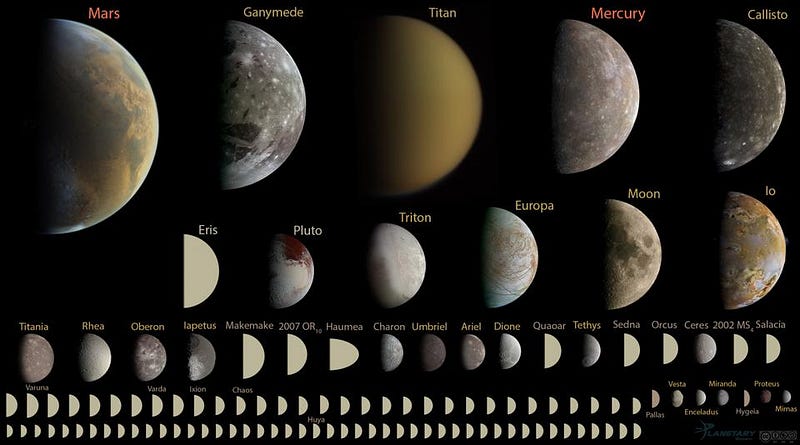
This new white dwarf — officially known as ZTFJ1901+1458 — has the smallest radius, the heaviest mass, and one of the shortest periods ever measured for this class of objects. Its large magnetic field points to an origin based in the merger of prior white dwarfs.
That does not, however, mean that white dwarfs like this are rare. Nor does it mean that white dwarfs don’t get heavier than this; estimates of the Chandrasekhar mass vary slightly based on rotation and composition: between 1.38 and 1.45 solar masses.
This white dwarf, whose mass is estimated to be between 1.327 and 1.365 solar masses, is certainly on the high end of the spectrum, but there ought to be white dwarfs that are really pushing this limit. In fact, one of them — a white dwarf orbiting a red giant in the T Coronae Borealis system — could very well be our galaxy’s next supernova. The white dwarf there is estimated to have a higher mass: 1.37 solar masses, but its uncertainties are also greater, as we cannot presently obtain a good radius measurement for it.
In fact, if ZTFJ1901+1458 were just two or three times farther away, we would not be able to make these precise measurements with our current set of observatories. For white dwarfs, it sets remarkable new records for size, mass, and magnetic field strength, but we also need to remind ourselves that we’re probing less than 0.001% of the white dwarfs in our galaxy at present.
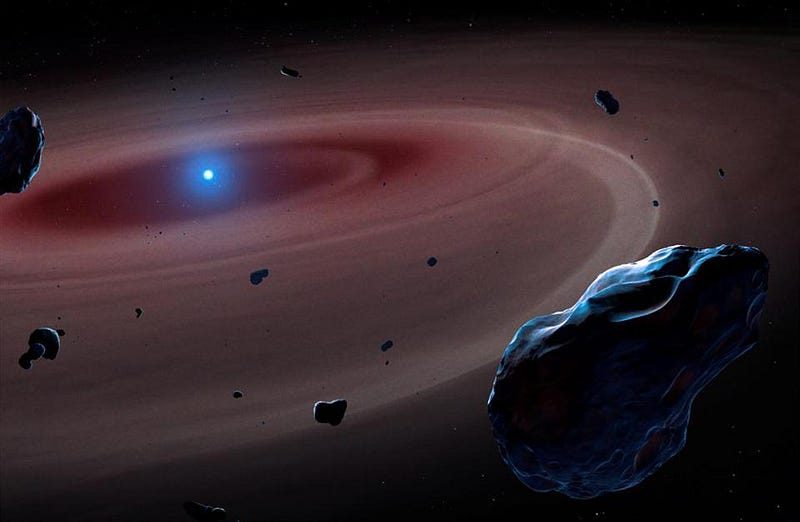
In the future, however, the next generation of observatories, including the Vera Rubin Observatory, will be able to make these types of measurements over volumes more than a hundred times greater than our current set of observatories can probe. Moreover, new and upgraded neutrino observatories might even be able to start measuring the neutrinos produced by the electron capture process acting on various elements supposedly within the white dwarf. The presence or absence of elements like neon, sodium, or magnesium could all affect not only the neutrino spectrum produced, but the fate, evolution, and possibly even the death of these massive white dwarfs.
This is the smallest white dwarf ever found, and in theory they may be able to actually get as small as Earth’s moon, which has a radius that’s only about 20% smaller than this new record-holder of a white dwarf. Because of its fast rotation, its high temperature, and its strong magnetic field, it’s very likely that this white dwarf formed from the merger of two progenitor white dwarfs, and that the object we’re seeing now is no more than ~100 million years old: a blip in the lifetime of the Universe.
This discovery not only helps us understand the ultimate fate and the cosmic extremes of the remnants of all Sun-like stars, but showcases the power of time-domain astronomy. If we can monitor objects sufficiently well to detect small changes on very short timescales, we’ll have the potential to uncover phenomena that we’d never see any other way. But if we modify the night sky too severely to make that task physically impossible — as our growing mega-constellations are currently in the process of doing — this information will likely remain elusive for years, decades, or even generations to come.
Starts With A Bang is written by Ethan Siegel, Ph.D., author of Beyond The Galaxy, and Treknology: The Science of Star Trek from Tricorders to Warp Drive.





